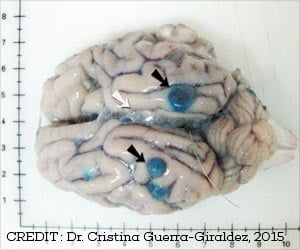US researchers have come up with a new way to get better quality X-ray images without having to use more radiation, which increases risk for patients.
US researchers have come up with a new way to get better quality X-ray images without having to use more radiation, which increases risk for patients.
The researchers took 15 images made with low doses of X-ray radiation, and used a new software to create a high resolution one from them, a process known as "super-resolution".Efforts of researchers from Duke University Medical Center in Durham and the University of California Santa Cruz, as well as Silicon Valley-based scientists, have given rise to the new approach.
The researchers say that to produce the same quality image would normally mean using a third more radiation than the combined dose of all 15 low-resolution exposures.
So far, they have conducted trials on a dummy breast. Their study showed dramatic improvements in resolution of fine features implanted within the substrate, and produced a clearer picture than could usually be made with the same amount of radiation.
Super resolution involves taking several low-resolution images by shifting a camera slightly each time. The images, which are subtly different, are then automatically aligned by comparing them all, two at a time generally.
The researchers say that it is possible to mathematically reverse the blurring effect and make a higher-resolution image by analysing the way the same features are blurred differently in each low-quality image.
Advertisement
The researchers have already devised more efficient algorithms that perform the two main steps involved in super-resolution quickly. Rather than comparing images two at a time, they compare all the low-resolution frames at once to create the final image.
Advertisement
"I think this approach has the potential to be very fast. Ultimately, if we are use super-resolution in consumer devices, we need to speed it up dramatically," says Farsiu.
The research work was presented at the Asilomar Conference on Signals, Systems, and Computers, in Pacific Grove, California.
Source-ANI
SRM /GA








